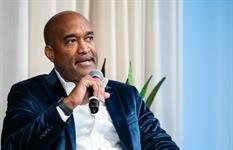
Live coverage from Ragan’s Internal Communications Conference.
No great comms plan is done in isolation, and both internal and external communications functions need to work in close conjunction to ensure that the organization’s messages are presented clearly to both employees and the world beyond the walls of the company.
During the pre-conference kickoff Tuesday at Ragan’s Internal Communications Conference at the Microsoft campus in Redmond, Washington, Sarab Kochhar, senior global communications officer, global communications at Gates Foundation and Sukhi Sahni, senior communications executive and instructor at Georgetown University, shared their perspectives on what makes mixternal communications strategies work.
“Our job is a dot connector,” Sahni told the audience. “You need to make sure different business units are actually talking to each other.”
She added that one of the biggest keys to mixternal comms success is getting past the idea that comms functions need to be siloed.
“We’ve reached a point where there’s no such thing as purely internal communication,” Sahni said. “Anything you say to your employees can surface externally within minutes. That’s why we have to start thinking of communications as fully integrated — a 360-degree discipline that connects employees, stakeholders and customers in one continuous conversation.”
Integrating comms with intent
Mixternal comms is a whole lot more than just one comms function parroting the other. It takes a deep knowledge of the audiences you’re trying to reach and the business aims of the organization.
“Integration isn’t about copying and pasting the same message across every channel,” Sahni said. “It’s about understanding your audiences — employees, partners, the public — and tailoring the story for each while staying anchored in a shared narrative. A single digital asset shouldn’t just be thrown on internal and external channels alike. Think strategically about where it belongs, how it lives and what it means to each audience.”
Kochhar said that in many cases, internal communications form the foundation of mixternal comms.
“Internal communication has to do double duty,” she said. “Every message should not only inform employees but also equip them to represent the organization externally with confidence. When you share a campaign, a video or an earned media feature, bring employees into that story before the public sees it. Let them be the first audience, not the last.”
Kochhar gave an illustrative example of how one message can work both inside and outside an organization.
“When we talk about health equity at my organization, we don’t just repeat a corporate slogan,” she said. “For employees, the message is about pride and purpose — the privilege of contributing to global progress. For partners, it’s about collaboration and shared impact. For the public, it’s about inspiration and collective good. The story doesn’t change, but the lens does.”
Employees are at the heart of mixternal strategies
Your employees are what give your company its identity and form the core of its culture. They’re also often the best people to tell your company’s story to the outside world. Sahni told the audience that in a past role, doing so led to a major engagement boost.
“We realized that our employees were already the best ambassadors we could ever hope for,” Sahni said. “At Wells Fargo, when we let employees tell the story by posting about what we were doing in our communities, engagement went up tenfold. That’s when it hit us — mixternal communication begins inside. Your people are your most credible storytellers.”
Kochhar added that comms pros should think about their organization’s employees as an extension of their messaging efforts. When guided in the right direction, employees can help boost a company’s employer branding.
“Think about it — every employee has a network, a perspective and a story to tell,” she said. “When we equip them with clear messaging, context and guardrails, they can become a distributed communication engine. That’s far more authentic than anything money can buy — and it builds brand from the inside out.”
Sahni said that building an effective mixternal comms strategy begins by giving employees the clearest possible information. That transparency is the foundation of organizational trust. That’s a necessary component in any communications push, whether it’s inside or outside a company.
“The most powerful mixternal programs are those that put employees at the center — not as passive recipients of messaging, but as active participants in telling it,” she said. “If we’re asking them to represent the brand externally, we owe them transparency and information internally.”
Sean Devlin is an editor at Ragan Communications.
The post Perfecting your mixternal communications strategy appeared first on PR Daily.













